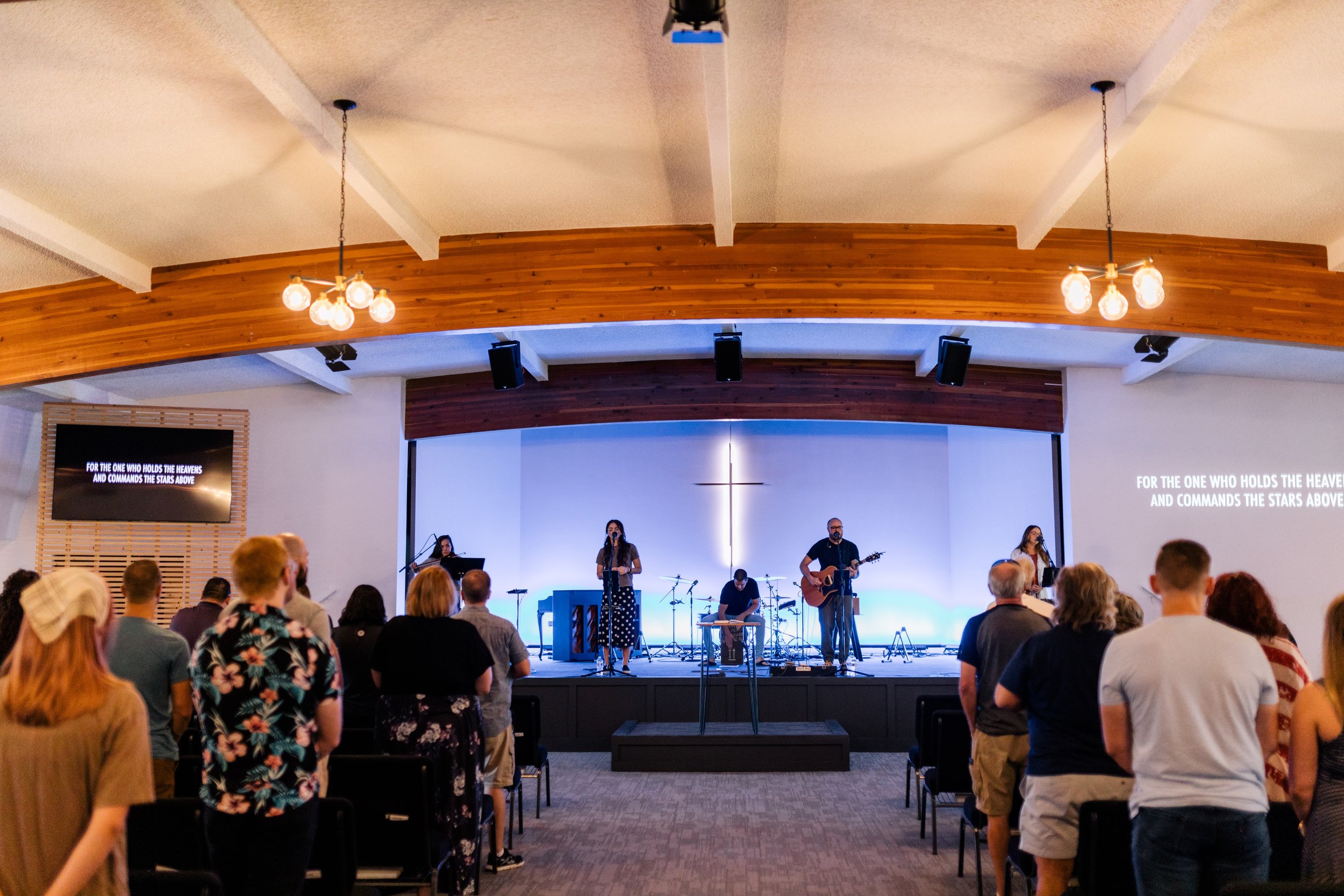
The Liturgy of Our Worship Gathering
We come on Sundays to be formed in the faith. These are the practices that form us.
Formation in Worship
"The practices of Christian worship train our love— they are practice for the coming kingdom, habituating us as citizens of the kingdom of God."
This quote comes from James K.A. Smith’s book You Are What You Love: The Spiritual Power of Habit. It reminds us that a type of formation is happening when we gather for worship. In fact, it is a type of counter-formation to the ways that our hearts and habits have been trained by the world to worship other things. When we gather, we critique the idols and false gospels that are all around us by remembering grace, focusing on Jesus, celebrating what he has done, and practicing the habits (prayer, confession, thanksgiving, service, etc.) that align with our identity as God’s children.
We employ readings, prayers, hymns, and confessions to structure our worship on Sundays. This work on behalf of the people is historically called “liturgy.”
We do what we do in worship when we gather for the purpose of what it does in us when we scatter. What we do in worship shapes the way we approach God in private. An intentional liturgy helps us tell the gospel story to ourselves and each other, and through repetition we cultivate good “vertical habits.”
Simply put, we remember and rehearse the story of the gospel each week when we gather. We do this because we constantly have amnesia toward the gospel, and we never want to forget it.
Every aspect and element of our liturgy is purposeful, for the sake of our formation in Christ.
The Elements Of Our Liturgy
Singing
Music has the capacity to connect the head and heart like nothing else. We select songs that communicate substantive truth in a way that captures our imaginations and emotions, usually of mix of hymns and modern worship songs. We believe our music should be creative and done with excellence, but humble in presentation and posture.
Call to Worship
Eugene Peterson said, “Worship is the strategy by which we interrupt our preoccupation with ourselves and attend to the presence of God.” We begin the worship gathering by reading from scripture, re-orienting our focus to God and our identity in him, as defined by his word. We do this to remember together that worship starts with God and not with us. He speaks, and we respond.
Confession/Lament
God’s good creation has been distorted by sin. We admit our part in that each week, spending time to confess our sins to God and one another. We also spend time lamenting that things are not as they ought to be because of sin. We read scriptures and sing songs that echo these emotions.
Assurance of Grace
Whatever bad news of sin is swallowed by the good news of the grace of God. Through the life, death, and resurrection of Jesus Christ, we are adopted and saved into His people. This sweet relief of the assurance of grace is why we can approach Him boldly, confessing our sins knowing that they are forgiven. Once we’ve remembered the severity of our sin, we are immediately reminded of the unsearchable depths of God’s grace in and through Jesus.
Prayer
In prayer we seek the heart of God and align our will with his. We draw close and speak to God with intimacy. As we gather, we pray, together, for our world, for our neighbors, and for one another. This is a formative act that reorients our hearts, our minds, and places us in right relationship with our sovereign God.
Greeting
We take three minutes in the middle of our gathering to greet one another. In an ideal world, this time would be longer. This isn’t just a simple greeting time to say hello, but it’s historically referred to as “the passing of peace.”
Christ’s work of reconciliation offers us forgiveness for our sins and the possibility of genuine fellowship and reconciliation in community. Thus, in many Christian traditions, after hearing words of assurance, worshipers are invited to share gestures of reconciliation and peace with each other.
The greeting time is a conscious break in the pattern of sitting and receiving information from a stage. It reorients us to one another, the collective body of Christ.
Scripture Reading
Prior to receiving teaching on God’s word, we read it aloud, standing as a physical act of showing God’s Word the honor it is due. We believe the power is in the Word itself, as illuminated by the Holy Spirit, not in our ideas. Therefore, the Word must be elevated and center.
Teaching
Following the reading of God’s word, the purpose of the sermon is to bring deeper understanding and application of the text to real life in our present context. It ought to reinforce who God is, what he has done, what he promises to do, and our identity and purpose in him. This is always good news.
The Lord’s Supper
We take the bread and the cup every week. This is a beautiful, physical ritual, instituted by Jesus himself, to remember him and the sufficiency of his life, death, and resurrection for our salvation. Because Jesus is the climax of the gospel – our hope and aim – this practice is the climax of our worship gathering.
Benediction
Finally, we end our time just as we started – with the Word of God. The benediction – a blessing for the road, sends us out into the world with a final reminder of God’s goodness. Look up, and hold out your hands during this time, and receive from God His good word, for we are a sent people (John 20:21; Acts 1:8).
